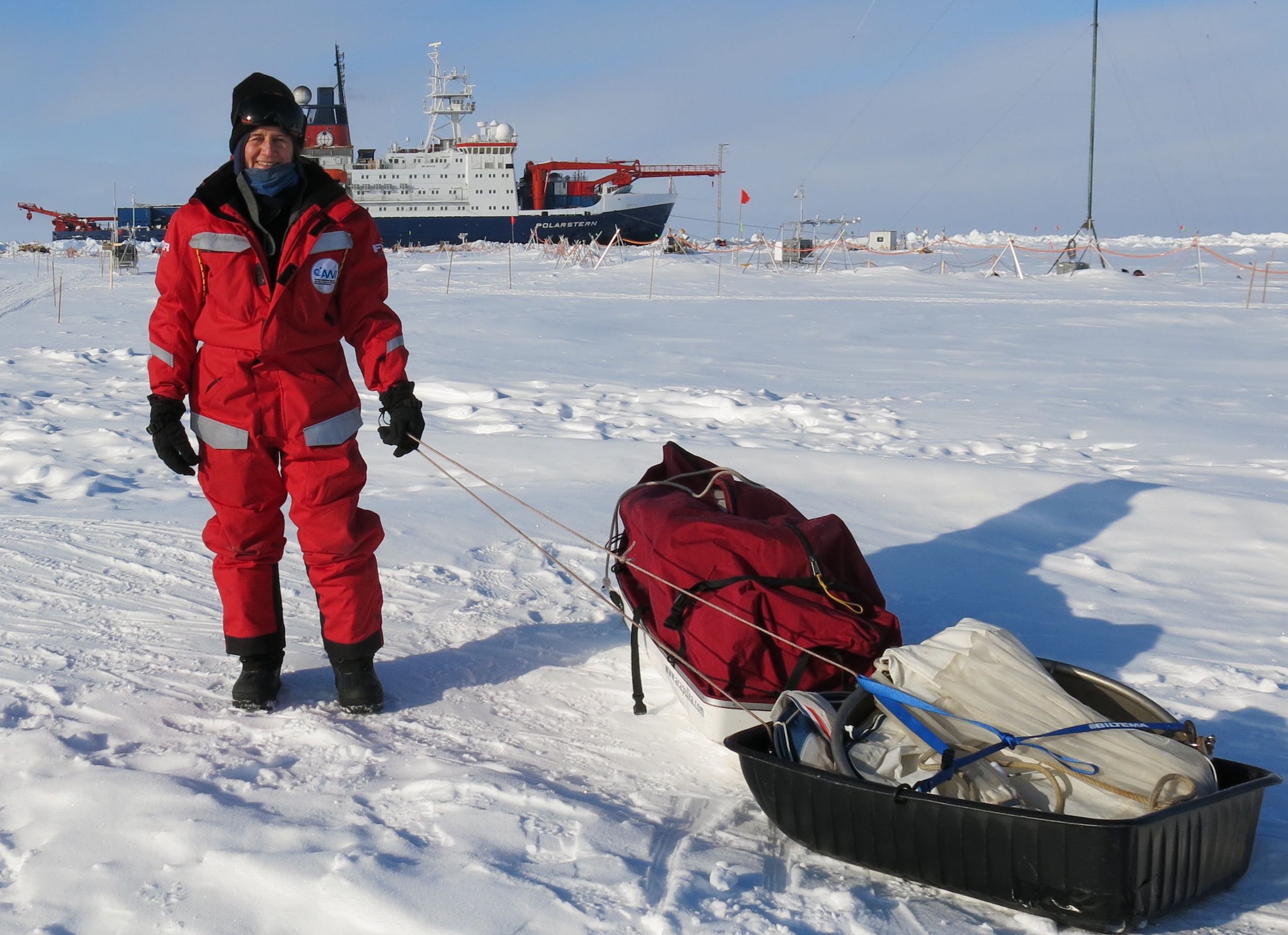WHOI oceanographer completes epic Arctic mission
International climate research project marked by scientific surprises, logistical challenges, and a pandemic
The largest Arctic science expedition in history has ended, with the return of the German icebreaker Polarstern to its home port of Bremerhaven more than one year after it departed Tromso, Norway. The ship spent the majority of its time at sea locked into and drifting with the sea ice as part of MOSAiC (Multidisciplinary Drifting Observatory for the Study of Arctic Climate) program, with teams of scientists rotating on and off the ship in two-months “legs.” Or at least that was the plan.
Carin Ashjian, a biological oceanographer and chair of the Biology Department at WHOI who joined the ship in February, was featured in an October 12 New York Times article recapping the expedition and her experience as part of Leg 3.

When she departed Woods Hole in January, the COVID pandemic was limited to Wuhan, China, but its spread eventually reached them near the North Pole forcing MOSAiC program managers to cancel the replacement team and keep Ashjian and her colleagues on the ship an extra two months.
Ashjian made good use of her time, focusing on the seasonal changes in populations of copepods, tiny crustaceans that play a critical part of the carbon cycle and the Arctic food web, including many of the more charismatic animals that inhabit the northern extremes of the planet. “If you want to know what’s going to happen to polar bears, well, to have polar bears you have to have seals. To have seals, you have to have fish. To have fish, you need copepods."
The National Science Foundation was the lead U.S. funder of MOSAiC, supporting dozens of researchers with about $27 million, which made the expedition one of the largest Arctic research initiatives the agency has ever mounted; the Department of Energy also invested nearly $10 million, providing a suite of atmospheric instruments. All MOSAiC data will soon be freely available to researchers around the world.
